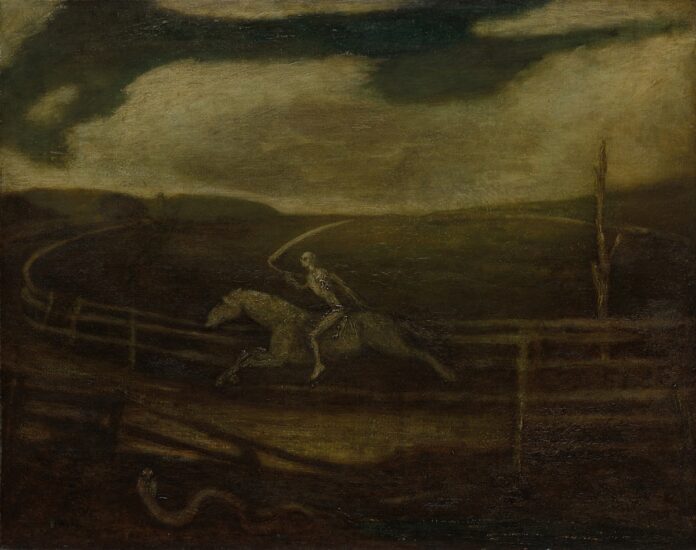If, like me, you love odd, ugly, small-scale art that has a cracked and thwarted look, is radically antisocial, and radiates hidden agendas, you’re probably a fan of Albert Pinkham Ryder. Ryder (1847-1917) was an experimentalist and a loner. Toward the end of his life, he mostly lost interest in exhibiting his work. Instead, he lived in a decrepit home coated in dust, the floors littered with unwashed dinner plates, and obsessively reworked his existing paintings.
[Sharp. Witty. Thoughtful. Sign up for the Style Memo newsletter.]
He was not, however, forgotten. Sometimes described as the father of American modern art, Ryder was beloved by many 20th-century American greats, including Arthur Dove, Marsden Hartley (who made a portrait of him) and Jackson Pollock. His work was surprisingly popular during his lifetime: Ten of his works were included in the 1913 Armory Show, the exhibition credited with bringing modernism to America. When he died, the Metropolitan Museum of Art staged a posthumous Ryder exhibition.
This obscure little beast of a painting, in the collection of the Cleveland Museum of Art, is one of Ryder’s most famous. It’s titled “The Race Track” but also commonly goes by “Death on a Pale Horse.” Just over 35 inches wide, it shows a white horse ridden around a racetrack by a skeletal-looking figure wielding a Grim Reaper’s scythe. In the foreground is a snake, representing temptation and evil. There’s a dead tree to the right. The sky, a curious mélange of dense cloud and open darkness, has a flat, graphic quality that lures us into looking for signs in its shapes.
The whole painting is mysterious and penumbral. But parts of it — the white cloud, the patch of light on the track in front of the horse, and the horse and rider themselves — glow with furious luminosity.
There’s a story behind the painting. Ryder used to dine at a local hotel, where he befriended a waiter who boasted that he would bet $500 on a horse in an upcoming race. When the horse lost, the waiter took his own life.
Haunted by what had happened, Ryder spent years on this work. But that was not unusual for him. His paintings look like they have died several deaths. He would build up layers of paint, resin and varnish, as if the image he sought were always on the cusp of eluding him, always dimming in front of his eyes. He used unorthodox materials such as candle wax and bitumen. In his urgency, he wouldn’t wait for each layer to dry and was often painting into wet varnish or brushing fast-drying paint into slow-drying paint.
Not that Ryder cared, but all of this was disastrous for the paintings’ stability. His works have an unusual luminosity that’s somehow a function of their density and texture. But almost all of them have darkened and deteriorated over time. Like ice, they expand and contract, developing cracks and fissures. Their frames don’t just set them off nicely; they seem to shore them up against deliquescence.
If Ryder was a visionary with insights into matters of the spirit, he was also wise, I think, about material entropy. The moon shines poetically on certain nights, certainly, but every day, things grow darker. Our homes and places of creativity become more cluttered and slovenly. People die. Ideals wither in the face of brute reality. Our bafflement thickens.



